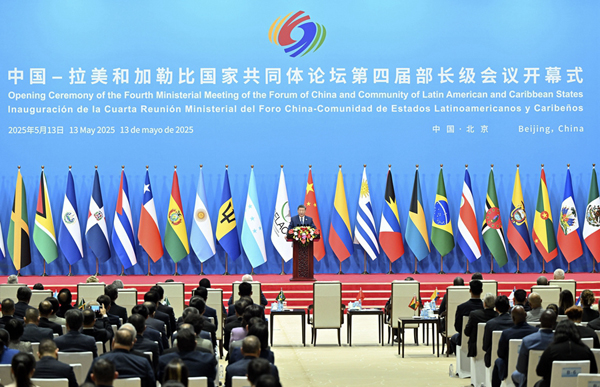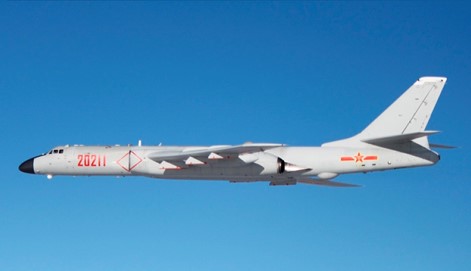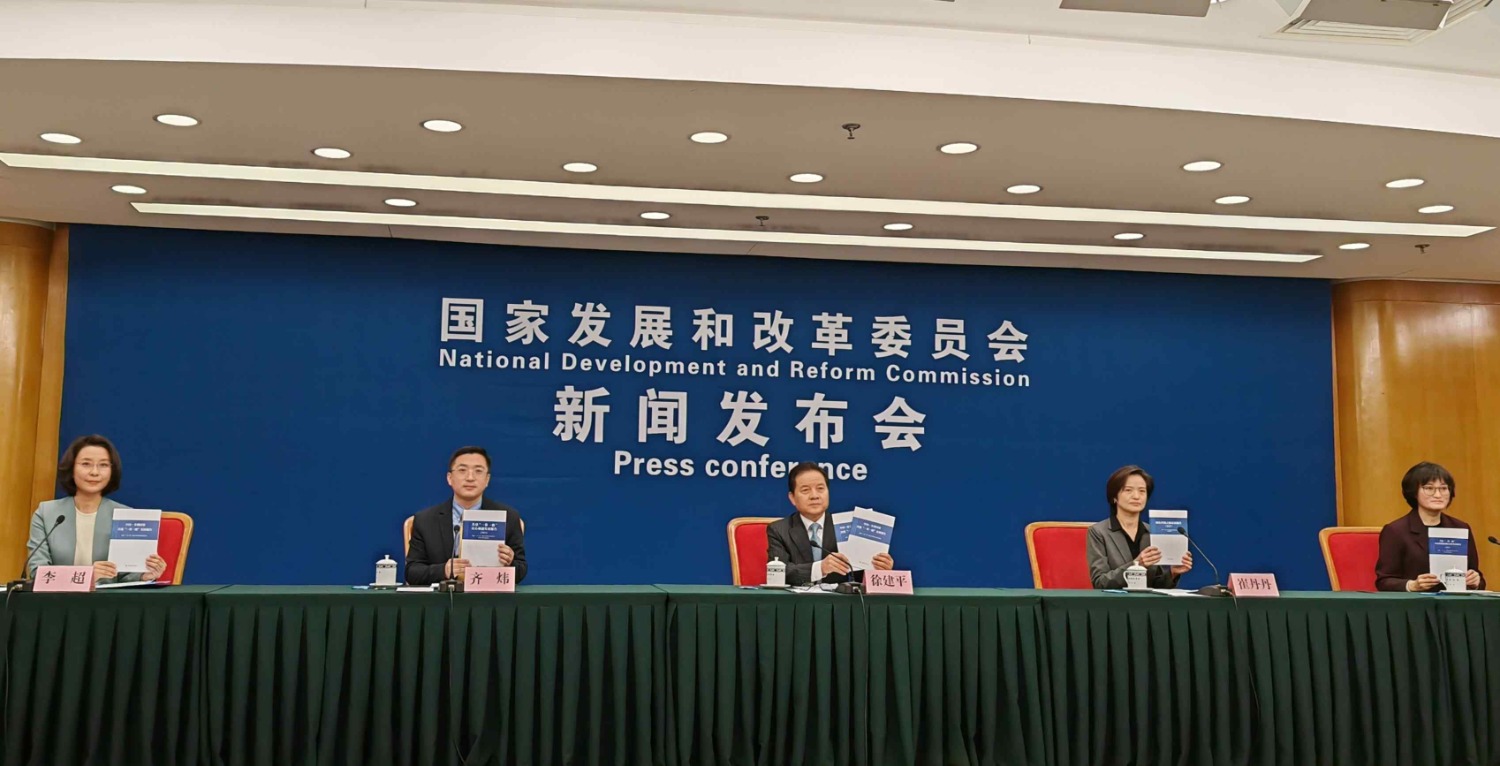
China Spares No Expense For Latin America and Caribbean Ties
China Spares No Expense For Latin America and Caribbean Ties
Executive Summary:
- The People’s Republic of China (PRC) has cultivated close ties with Brazil, which it sees as a prime candidate to co-lead the Global South in an emerging multipolar world.
- Beijing is now the top trading partner for the South American continent, including with individual countries like Brazil, Chile, and Peru, and has persuaded 24 of the 33 members of CELAC—the Community of Latin American and Caribbean States—to join the One Belt One Road initiative.
- The PRC has also been successful in poaching Taiwan’s dwindling allies in the region and is currently targeting Paraguay and Guatemala with economic incentives.
In May, People’s Republic of China (PRC) President Xi Jinping announced an RMB 66 billion ($9.2 billion) credit line to partners in the Community of Latin American and Caribbean States. Unveiled at the opening ceremony of the annual at the China-CELAC Forum in Beijing, this was the latest example of a determination to leverage the PRC’s vast financial and economic resources to expand influence in the region. Xi also vowed to increase imports from the region and encourage PRC firms to invest there (Xinhua, May 13).
In his speech to representatives from 33 countries, Xi placed the PRC’s relationship with the region in the context of Beijing’s broader great power competition with the United States. “Changes unseen in a century are accelerating and evolving” (世界百年变局加速演进), Xi said, reflecting the Chinese Communist Party’s (CCP) assessment that U.S. power is waning while the PRC’s is ascendant. Emphasizing “bullies and hegemons” (霸凌霸道)—that is, the United States—will only isolate themselves through trade wars, Xi added that the PRC and Latin American countries had formed a “China-CELAC community of common destiny” (中拉命运共同体), tying the region to the Party’s vision for global governance (PRC Foreign Ministry, May 13).
The PRC is now Latin America’s second-largest trading partner after the United States, with bilateral trade reaching nearly $520 billion in 2024. Beijing is the top trading partner for the South American continent, including with individual countries like Brazil, Chile, and Peru (Xinhua, May 23). It is now attempting to use what is depicts as hostile actions from the Trump administration to present itself as a more reliable partner. Some countries are wary of Beijing’s overtures but many are attracted to its promises of greater trade and investment. Absent a dramatic shift in U.S. foreign policy, the PRC is likely to make deeper inroads into Latin America in the coming years.
PRC-Brazil Ties Consolidate
The PRC’s has cultivated a close relationship with Brazil, which ranks first in the region in terms of size, economic scale, and population. In a November 2024 article published in Brazilian paper Folha de S. Paulo shortly before the G20 summit, Xi noted that Brazil was the first country to establish a strategic partnership with the PRC and the first Latin American nation to establish a comprehensive strategic partnership (China Brief, September 20, 2024; FMPRC, Folha de S. Paolo, November 17, 2024).
Xi’s article articulated a desire for Brasília to play a co-leading role in the Global South alongside Beijing. He noted that PRC-Brazil ties “have always been at the forefront of the PRC’s relations with developing countries” (系始终走在中国同发展中国家关系的前列)—something that he reiterated in his latest meetings with President Luiz Inácio Lula da Silva (China Brief, May 27). Xi argued that the “voice and demands” (声音和诉求) of Global South countries have not been fully reflected in the current international governance system. To rectify this, he called on Brazil and the PRC to join hands with the rest of the Global South to firmly defend developing countries’ interests and push the global governance system in a “more just and reasonable direction” (更加公正合理的方向) (FMPRC, November 17, 2024).
Beijing’s desire to promote a more multipolar global order is a direct challenge to the United States and the liberal international institutions it supports. Until recently, Brazil had less interest in directly challenging the United States, of which it is a major non-NATO ally and with which it has extensive economic ties (U.S. Department of State, September 9, 2024, January 20). That may now be changing. During a visit to Beijing in May, President Lula expressed dissatisfaction with “the so-called ‘taxation’ that the U.S. president tried to impose on the planet overnight.” He emphasized the PRC and Brazil’s interdependence and said the two nations can make the Global South respected worldwide “like never before” (Brasil de Fato, May 13). The relationship is even branching out to include security cooperation under the CELAC umbrella, though this is currently limited (China Brief, May 27).
International finance is an important growing domain for bilateral cooperation. In May, the Brazilian and PRC central banks signed three memoranda of understanding: One on financial strategic cooperation that aims to facilitate cooperation on investment, financial infrastructure, payments, and local currencies; one renewing a bilateral currency swap agreement valued at RMB 190 billion (about $26 billion); and one focused on jointly combating money laundering and terrorist financing (PBOC, May 13).
Tightening Belts and Deepening Inroads
An important measure of the PRC’s success in Latin America is the near ubiquity in the region of the One Belt One Road (OBOR) initiative. Currently, 24 out of 33 CELAC countries are partners—including Brazil (Belt and Road Portal, accessed June 16). Hector Morales, an executive at Macquarie Capital Latin America, notes that the unifying factor for every country in the region is that “virtually all face a significant infrastructure gap” (Macquarie, December 1, 2023). OBOR’s initial phase, which emphasized physical infrastructure development, thus found eager participants. Its flagship project in the region is Peru’s Chancay Port, “the first large-scale deep-water and smart port built by a Chinese company in South America,” which officially began commercial operations this month (China Brief, March 15, 2024; Global Times, June 13).
Colombia became the OBOR initiative’s newest member in May, in defiance of U.S. opposition. This represented a significant strategic shift. Bogotá long resisted the PRC’s overtures, but under Gustavo Petro, the country’s first-ever left-wing president, Colombia is pivoting. This comes despite longstanding economic and security cooperation with the United States, with whom it is another Major Non-NATO Ally. Petro has frequently expressed frustration with what he sees as U.S. “indifference” toward Colombia’s needs (U.S. Department of State, January 20; The City Paper, May). The PRC lauded Bogotá’s decision to join the “‘Belt and Road’ family” (“一带一路”大家庭), with a Xinhua commentary framing it as a “strategic choice for Colombia to grasp the pulse of the times and follow the trend of development” (哥伦比亚把握时代脉搏、顺应发展潮流的战略抉择) (Xinhua, May 22).
OBOR has nevertheless encountered challenges in Latin America. The International Cooperation Center (ICC), a Beijing-based think tank affiliated with the CCP’s United Front Work Department, notes that disagreements among countries involved in multilateral projects has slowed their progress. This is particularly true for the transoceanic railway project intended to connect Brazil’s Atlantic coast to the Pacific coast of Peru. As early as 2014, the PRC, Brazil, and Peru issued a joint statement and established a working group in support of the project. In the 11 years since, however, the project has made no substantial progress despite extensive negotiations (ICC, June 17, 2024).
The International Cooperation Center also accuses the United States of trying to hinder the OBOR initiative’s advancement in Latin America, which it says Washington sees as “another important region for competition with China” (ICC, June 17, 2024). Most U.S. efforts in this vein have not borne fruit—with the notable exception of Panama choosing to withdraw from the Maritime Silk Road (the maritime portion of OBOR) in February following a visit to the country by U.S. Secretary of State Marco Rubio (China Brief, March 28). At the time, PRC Deputy Foreign Minister Zhao Zhiyuan (赵志远) blamed the United States for the decision, accusing it of using “pressure and threats to wantonly undermine China-Panama relations” (通过施压威胁的手段肆意破坏中巴关系) (Lianhe Zaobao, February 8).
Squeezing Taiwan’s International Space
Poaching some of Taiwan’s last remaining diplomatic allies represents another dimension of the PRC’s increased presence in Latin America and ramped up geopolitical competition with the United States. In the past decade, Beijing has successfully persuaded five erstwhile regional allies of Taiwan to derecognize the island democracy and instead to establish ties with the PRC. Beijing began these efforts in earnest following the January 2016 election of Tsai Ing-wen (蔡英文), whom the PRC leadership views as encouraging separatism and Taiwan independence. [1]
Beijing’s pitch has centered on trade and investment promises that Taipei cannot match. In some cases, it has made good on its promises, such as in Panama, where the PRC has invested billions of dollars. In other, less strategically important countries, it has invested considerably less. In El Salvador and the Dominican Republic, the main result of recognition on trade was to subject its market and producers to increased competition from the PRC (CSIS, March 22, 2021, October 31, 2023). For its part, Nicaragua nixed a controversial canal concession to a PRC businessman in 2024, given concerns it could harm the environment and displace rural communities (VOA Chinese, May 23, 2024).
For the United States, Taiwan’s loss of Honduras—which occurred in March 2023—was especially troubling. Honduras is the most important American military partner in Central America, hosting up to 500 U.S. military personnel at Soto Cano Air Base. The United States took the unusual step of trying to publicly dissuade Honduras from making the switch after behind-the-scenes efforts failed. An article on the PRC website 163.com described Honduras’s shift as evidence of the continuing rise of the PRC’s global influence, arguing that it was “a trend of the times and a general trend” (时代趋势,大势所趋) (163.com, March 21, 2023).
The PRC is now turning its attention to some of the last of Taiwan’s Latin American allies: Paraguay and Guatemala. [2] In December 2024, Beijing reportedly offered to expand beef imports from Paraguay (beef is its top export) as well as other products if Asunción agreed to derecognize Taiwan. The Paraguayan government refused, however (CNA, March 6). Some Latin America-based Taiwanese analysts worry that Guatemala, Taiwan’s last Central American ally, could cave to PRC pressure during President Trump’s second term. Yang Jianping (楊建平), an honorary professor of the National Defense University of Honduras, noted that U.S. Secretary of State Marco Rubio’s February visit to Guatemala was focused on the United States’s own interests (in this case, immigration) and cautioned against excessive optimism about how the visit could stabilize Taiwan’s ties with the country (World Journal, February 5).
Conclusion
Against the backdrop of an intensifying great-power competition with the United States, the PRC has been steadily increasing its presence in Latin America. In this region, where the United States has traditionally been the most influential external power, the PRC has become a larger trading partner to and investor in many countries over the past decade. Given Latin America’s need for infrastructure investment, Beijing’s OBOR initiative has been largely welcomed, though its results vary significantly by country. Some Latin American countries that broke official ties with Taiwan to establish diplomatic relations with the PRC have not reaped the expected trade and investment benefits.
The PRC sees an opening for further overtures given Washington’s unpopular protectionist trade policies. As a result, Latin American countries are likely to drift further into the PRC’s orbit as Beijing positions itself as a stalwart of freer trade and leader of the Global South. Beijing also has moved aggressively to address the Trump administration’s attempt to force the sale of ports on the Panama Canal—currently owned by Hong Kong-based firm CK Hutchinson—to a consortium led by U.S. financial services giant BlackRock. A Panama Canal Authority official recently criticized the deal, while industry reporting suggests that PRC state-owned giant COSCO could be involved in a restructured deal (South China Morning Post, June 11; Maritime Executive, June 13). The deal’s eventual outcome could be yet another sign that the PRC is ascendant in Latin America, at the expense of U.S. influence.
Notes
[1] These six countries include Panama, the Dominican Republic, El Salvador, Nicaragua, and Honduras.
[2] Taiwan has seven remaining regional allies: Belize, Republic of Guatemala, Haiti, Republic of Paraguay, St. Kitts and Nevis, Saint Lucia, and St. Vincent & the Grenadines.


